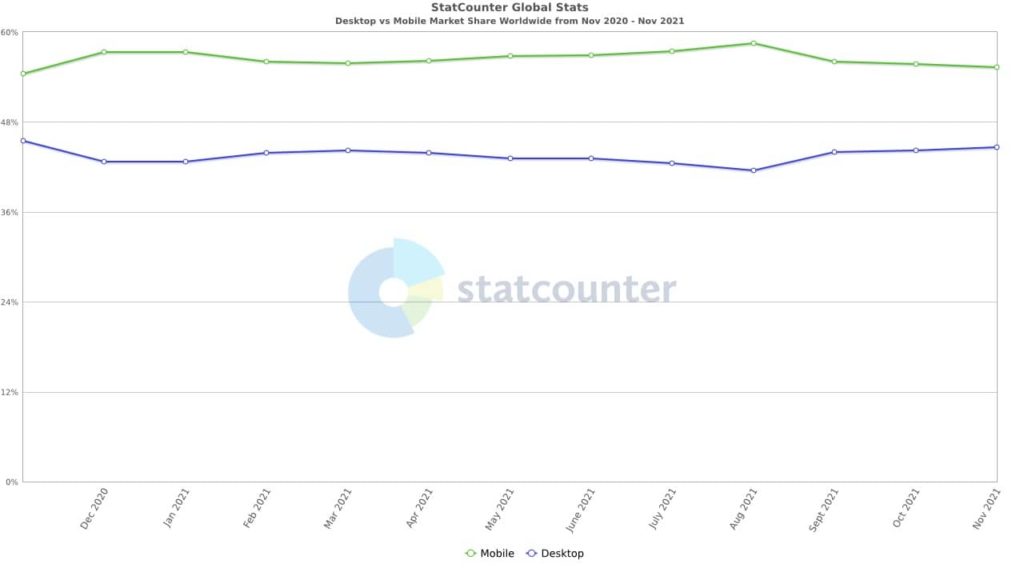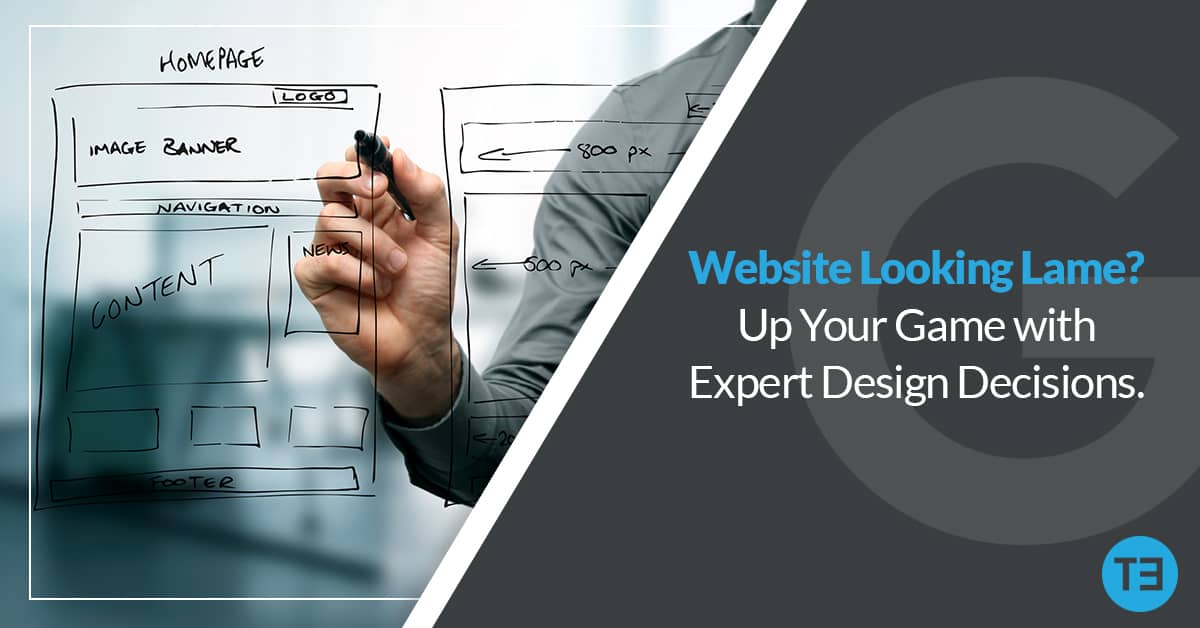Is Your Website All It Should Be? Questions to Help You Design a Perfect Website
8 Minute Read
If you don’t have a business website in today’s digital age, you’re missing out big time. Customers will look for you online, and you need to control what they see.
The thought of building a website may be daunting. Even with the plethora of out-of-the-box templates and web-based tools available, businesses and in-house marketers often struggle to create a site that represents their brand, helps customers find them, and drives leads and sales.
Whether you are thinking about hiring an agency or taking the project on yourself, website design combines art and science. A great website user experience ultimately boils down to two different elements:
- Usability (i.e., Does your website work?)
AND - Impression (i.e., How does the website make a user feel?)
Some web designers might argue this is overly simplistic. However, our experts find that every single design decision lands in one or both of these baskets. Simplicity is key, especially for marketers and business owners trying the DIY approach.

How to Make Your Website More User-Friendly
The internet as we know it has been around for over 30 years. In that time, so many trends have come and gone. Some seemed like great ideas (remember blinking text and peeling web page corners?) Other trends were cumbersome yet necessary rungs in the digital ladder that got us to where we are now.
Design can be so subjective (one person’s dud is another’s jewel), but there are some elements and techniques of web design that have been time-tested and proven to provide a better user experience. Ultimately, these tactics turn users into repeat customers.
Our Web Design Experts looked back on their decades of combined creative experience to identify the most important questions marketers and businesses should ask themselves to determine if their website needs an upgrade.
Is Your Website Readable?
The trend of big, bold typography really took off in 2020 and shows no sign of slowing. As part of the full browser takeover movement, it grabs attention and makes an instant impression on the user.
Users will make a judgment call on the quality of a website within milliseconds. Improved legibility of the text improves the overall user experience, making it more likely that users will continue to engage with the site.
Most users skim webpages (at least at first). Large, bold text treatments allow a designer to tell a story faster while keeping the visual style simple. More often than not, simple equals better.
This trend is also beneficial for page speed and load times, as fonts load much faster than images. As a result, visitors to the website are grabbed immediately without having to wait. This makes it more likely that they will stay on the site, visit additional pages, and even convert.
Does Your Website Work on All Devices?
Today, you can expect that more than half of your audience is accessing your website through a mobile device. Although mobile traffic may represent a majority of the visitors accessing your website, desktop users still represent a significant portion of your audience (with those on tablets typically a distant third).

You need to know that your website will function properly on desktop computers, tablets, and smartphones. Therefore, you need to design with all of these devices and screen sizes in mind.
Make sure your website has the following elements so it can serve all potential customers effectively:
- Large, clearly labeled buttons
- Text that is easy to read and scan regardless of screen size
- Straightforward menus with a clear hierarchy
- Clear call-to-action and conversion elements
- Minimal distractions
In years past, designers tended to throw everything but the kitchen sink into the look and feel of a website. As the need for responsive designs grew, a trend of oversimplification arose. Today we’re seeing parity in the world of desktop and mobile design. Savvy designers know that websites need to appeal to mobile and desktop audiences, and they create web designs that cater effectively to this broad audience.
Is Your Website Searchable?
Search engine optimization is a major consideration in designing websites. For customers to find your site, the design and SEO need to work hand in hand to stand out in search results and engage visitors.
The most important SEO components to account for in your website design include:
- Page Speed: Users won’t wait for pages to load before they leave the site. What’s more, page speed is a ranking factor on Google. Designers and developers need to keep this in mind so they don’t add too many visual elements that slow down the site.
- Image Alt Text: Alt text is copy you add on the back end of the website to describe images to human users and search engines. It appears when images fail to load (making it valuable for users with a slow internet connection), as well as when users who are visually impaired visit a website using accessibility tools. All visual assets on your website should include image alt text to aid these users, as well as to inform search crawlers of any otherwise-unreadable content on the page.
- Readability: Bold text, header tags, bullet point lists, and other text elements tell people reading a webpage “something’s different – pay attention!” The same is true for search bots, which are likely to assign greater weight to text outside of the standard paragraph tags. As such, designers and optimizers need to work together to ensure these parts of the page pop while making them readable to human users and search engines alike.
Making these aspects of your site a priority during the design and development process can improve your organic SEO. It is also important to consider paid search in your design decisions as well. Achieving success in pay-per-click advertising may involve designing special webpages and creating custom messaging for one or more audiences.
Does Your Website Prioritize Information Effectively?
If print materials are akin to the traditional book, websites are closer to a choose-your-own-adventure novel. As fun as it is to explore the paths in those classic books, on a website you need to lay out all of the choices for users upfront via thoughtful web design.
Most users scan websites, so it is very important to organize information with hierarchy and flow in mind. Headlines should be able to tell a story on their own, augmented by hyperlinks, menus, and an internal search function that can help users navigate to supporting pages.
Is Your Website Scalable?
Scalability is immensely important for the success of your website. Your site should be a living document that can grow in tandem with your business.
To achieve this, you need to start by designing the website so it can facilitate potential revisions. Most websites today are built with content management systems (CMS) that allow owners and marketers to make changes on the fly.
While you shouldn’t make radical changes to the design of your website every week, functionality within the CMS should allow you to update the website with important messaging, visual assets, and more. This capability will enable you to design your website so it looks and feels like your business does throughout the course of your growth.

How to Make a Positive Impression with Your Website
If usability represents the “science” of website design, impression is the art. This part of the process is all about what users see and how they feel as a result.
Whether it’s a first impression or the umpteenth time a customer has visited your website, you need to satisfy the needs and goals that bring people to the site in the first place. In addition to making the website easy to use, the design needs to include strong visual and emotional components.
Does Your Website Showcase Great Design?
Beauty is in the eye of the beholder. Even a cursory survey of your competitors’ websites may reveal a host of different design philosophies at work. However, you always need to remember that the design of the website needs to work with the usability, not against it.
To that end, you really can’t go wrong with a clean, elegant website design that is easy to use and easy to read. Of course, you shouldn’t sacrifice all of your creativity strictly for functionality, but any flourishes should have a clear and definite purpose that amplifies the user experience.
Is Your Website Memorable?
First impressions count for a lot. They also form lightning-fast, with people making a judgment within one-tenth of a second. Websites that stand out in a user’s memory are either really good or really bad – make sure yours is in that first camp.
Making a good first impression with your website can come down to a lot of different things. Prioritizing the following can help forge a positive association in the mind of the audience with your business:
- A memorable logo
- Custom photos
- Eye-catching graphics
- A relatable tagline or slogan
- Easy-to-read text
- Clear contact information
- A seamless way to buy online and/or make an appointment
Not all purchases happen when users first visit a website. Often, customers need time to make a decision about the product or service. Having a polished, engaging website is the best way to stand out during the consideration process. This, combined with remarketing and other digital advertising strategies, makes it much more likely that you will earn the customer’s recollection, trust, and business.
Does Your Website Connect with Users on an Emotional Level?
Customers want to know they are interacting with human beings. A stuffy or overly clinical image is not going to earn that first purchase or create a lifelong fan.
When designing a website, you need to think long and hard about your brand. Developing a brand identity is essential for standing out from the crowd. This means thinking beyond the form and function of your website to nail the emotional differentiators that cause users to want to buy from you and you alone.
Multiple branding elements should be integrated in your website design, including:
- Your logo
- The favored color scheme for your business
- Personable typography
- A favicon (a small image similar to your logo that represents your brand; most effectively used as an icon to appear at the top of tabs and windows in web browsers)
- Custom written content
Your website design should be consistent with all other aspects of your brand, from in-store experiences to traditional media ads and collateral. In fact, the best brands create a cohesive online and in-person experience. This should be your goal when building a website for your business.
Learn What the Pros Can Do for Your Website Design
Designing and developing a website can be time-consuming. Website builder tools are often easy to learn but hard to master, making it difficult to realize your vision. Even if you have one employee or a dedicated team of people in-house to work on the site, the project can quickly spiral out-of-control amid competing priorities and internal debates.
Given these challenges, many businesses turn to marketing agencies to design websites for them. If you are considering this option, it is in your best interest to hire the best in the business.
Our Website Design & Development Team has decades of experience creating best-in-class websites for a wide range of businesses and industries. We know how to make a good first impression with your customers and create a functional user experience that represents your brand, gets you ranked in online search results, and helps your business grow.
Gain the unfair marketing advantage. Contact the experts at Twelve Three Media to start designing a perfect website for your business!
